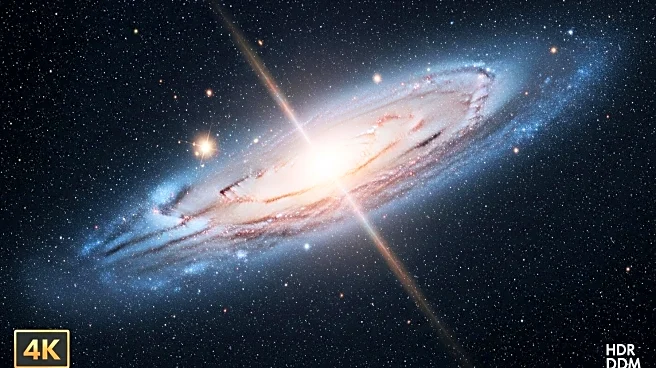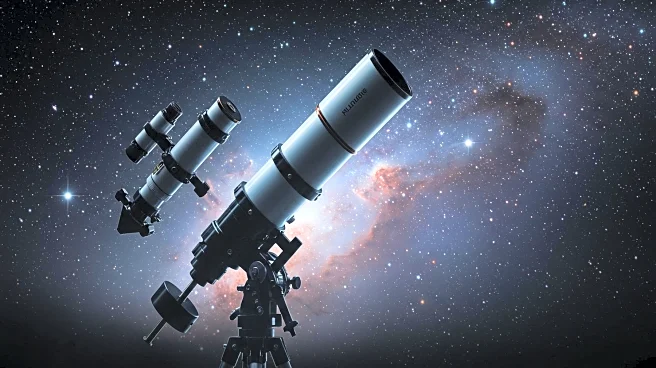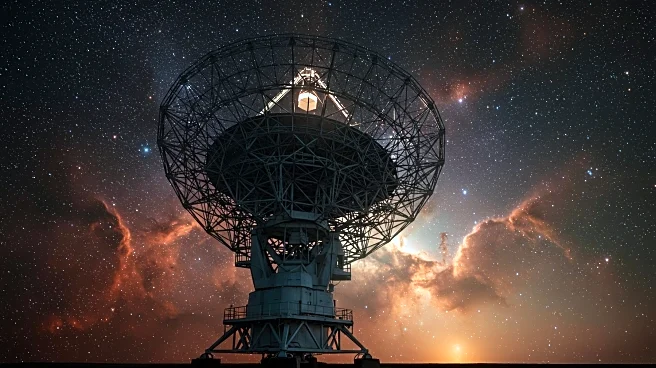What's Happening?
NASA's Imaging X-ray Polarimetry Explorer (IXPE) has observed unexpected X-ray polarization from the 'heartbeat black hole' IGR J17091-3624, located approximately 28,000 light-years away. This black hole is known for its rhythmic brightness pulses as it consumes matter from a companion star. The IXPE measured a 9.1% polarization degree, which is significantly higher than anticipated by current theoretical models. This discovery has prompted scientists to reconsider the behavior of matter around black holes. Two competing models have been proposed to explain the observations: one suggests strong winds from the accretion disk scatter X-rays, while the other posits that the corona is moving outward at high speeds, causing relativistic effects that increase polarization.
Why It's Important?
The findings from NASA's IXPE challenge long-standing beliefs about black hole environments and the behavior of matter in extreme conditions. Understanding the polarization of X-rays can provide insights into the geometry and dynamics of black holes, which are crucial for comprehending their growth and influence in the universe. The discovery could lead to new models that better explain the interactions between black holes and their surroundings, potentially impacting astrophysics research and our understanding of cosmic phenomena. Researchers anticipate that future observations may yield even more surprising results, further advancing the field.
What's Next?
Astronomers plan to continue modeling and testing predictions to understand the high degree of polarization observed. Future research will focus on refining the models and exploring the implications of these findings for black hole growth and behavior. The ongoing study aims to provide a clearer picture of the processes occurring in the vicinity of black holes, which could lead to breakthroughs in astrophysics and enhance our understanding of the universe.
Beyond the Headlines
The study of black holes and their environments touches on fundamental questions about the nature of the universe. The unexpected polarization measurements could lead to a reevaluation of how black holes interact with their surroundings, potentially influencing theories about galaxy formation and evolution. The research also highlights the importance of advanced observational technologies like IXPE in uncovering new aspects of cosmic phenomena.











